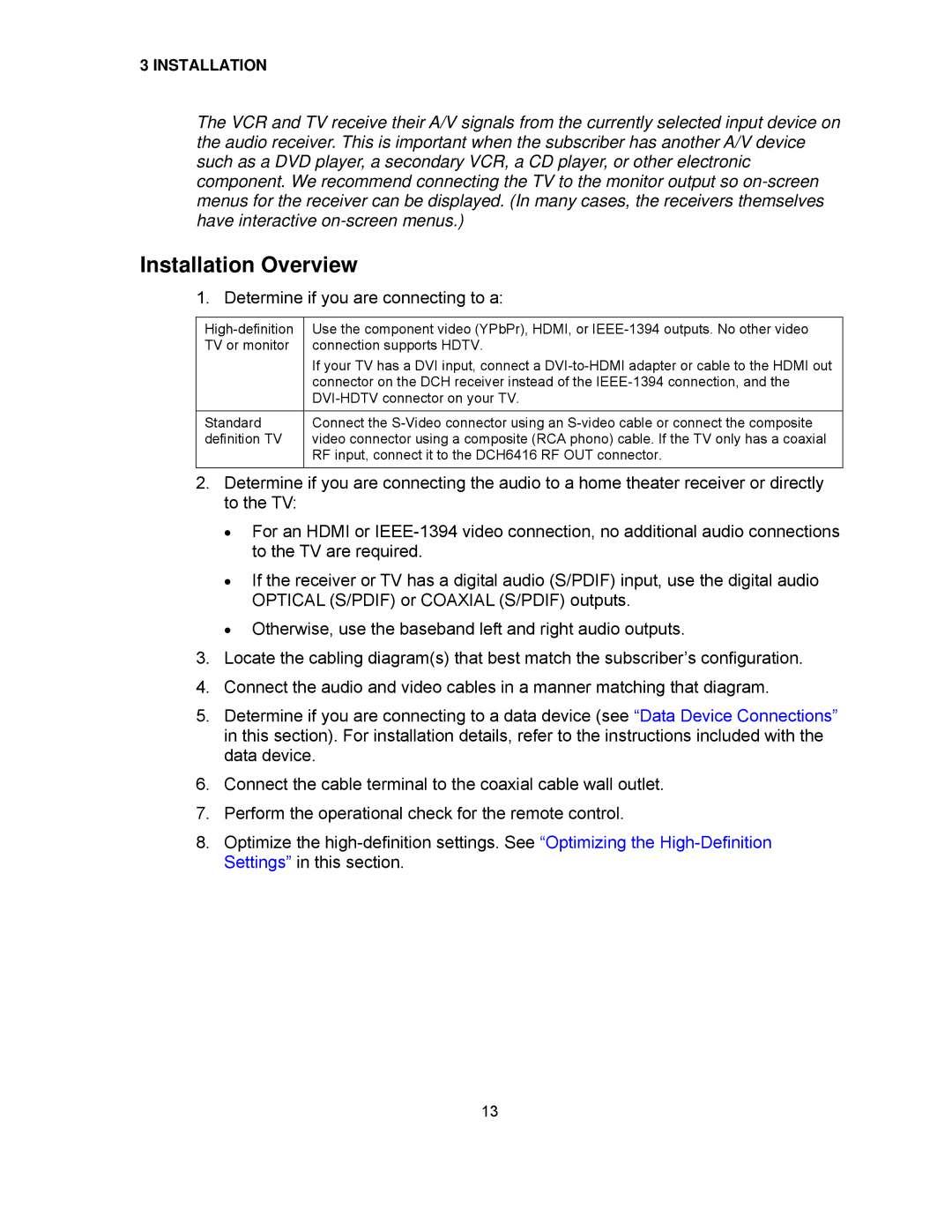3 INSTALLATION
The VCR and TV receive their A/V signals from the currently selected input device on the audio receiver. This is important when the subscriber has another A/V device such as a DVD player, a secondary VCR, a CD player, or other electronic component. We recommend connecting the TV to the monitor output so
Installation Overview
1. Determine if you are connecting to a:
Use the component video (YPbPr), HDMI, or | |
TV or monitor | connection supports HDTV. |
| If your TV has a DVI input, connect a |
| connector on the DCH receiver instead of the |
| |
|
|
Standard | Connect the |
definition TV | video connector using a composite (RCA phono) cable. If the TV only has a coaxial |
| RF input, connect it to the DCH6416 RF OUT connector. |
|
|
2.Determine if you are connecting the audio to a home theater receiver or directly to the TV:
•For an HDMI or
•If the receiver or TV has a digital audio (S/PDIF) input, use the digital audio OPTICAL (S/PDIF) or COAXIAL (S/PDIF) outputs.
•Otherwise, use the baseband left and right audio outputs.
3.Locate the cabling diagram(s) that best match the subscriber’s configuration.
4.Connect the audio and video cables in a manner matching that diagram.
5.Determine if you are connecting to a data device (see “Data Device Connections” in this section). For installation details, refer to the instructions included with the data device.
6.Connect the cable terminal to the coaxial cable wall outlet.
7.Perform the operational check for the remote control.
8.Optimize the
13
